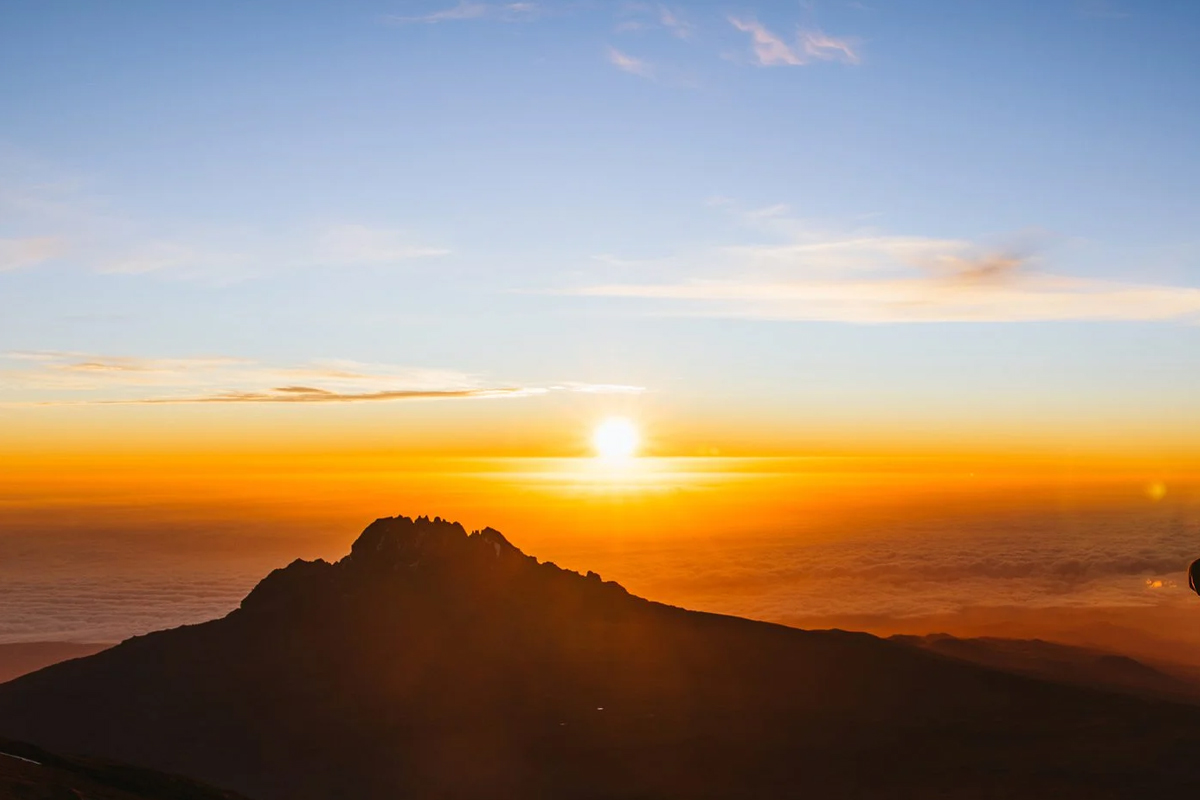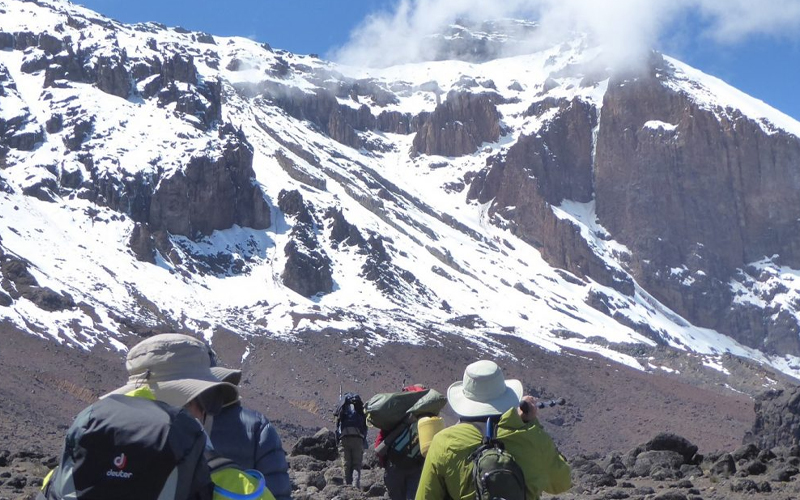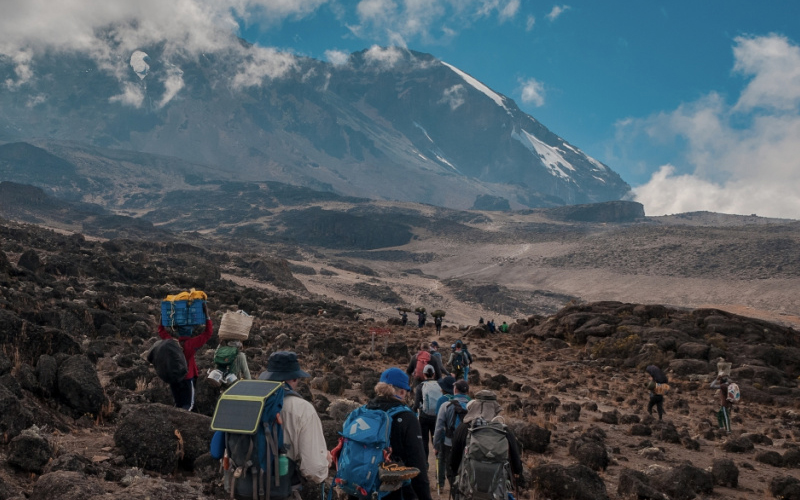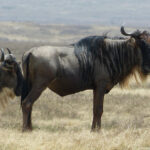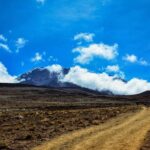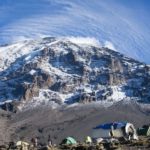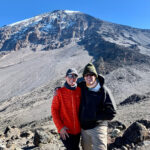Kilimanjaro Snowfall Record Low 2024
Mount Kilimanjaro, Africa’s highest peak and one of the world’s most iconic trekking destinations, is known for its towering presence and snow-capped summit. However, in 2024, the mountain is witnessing record-low snowfall, raising concerns about the future of its glaciers and what this means for trekkers aiming to reach Uhuru Peak. The shrinking snow cover is a stark reminder of the ongoing impacts of climate change, but it also has direct implications for those planning to scale the mountain. In this article, we’ll explore the reasons behind the reduced snowfall, its effects on the trekking experience, and what trekkers should know before embarking on their journey.
The Significance of Kilimanjaro’s Snow and Glaciers
Mount Kilimanjaro’s snow and glaciers are not just aesthetically significant; they play an important role in the mountain’s ecosystem. The glaciers at the summit, particularly the Furtwängler Glacier, are remnants of a once much larger ice cap that covered the mountain’s peak. Historically, the snow-capped summit of Kilimanjaro has been an iconic image, attracting trekkers from all over the world.
However, since the early 20th century, Kilimanjaro’s glaciers have been retreating, with scientists warning that they may disappear entirely in the coming decades. The record-low snowfall in 2024 is further accelerating this process and has sparked renewed discussions about the mountain’s future.
Why Is Kilimanjaro Experiencing Record Low Snowfall?
- Impact of Climate Change: The primary reason behind the diminishing snowfall on Kilimanjaro is climate change. Rising global temperatures are contributing to less precipitation in the form of snow at higher altitudes, and the snow that does fall melts more quickly. Kilimanjaro’s glaciers, which were once stable, are now shrinking at an alarming rate.
- Changing Weather Patterns: In addition to global warming, changing weather patterns are affecting Kilimanjaro’s climate. The mountain relies on a combination of wet and dry seasons to sustain its glaciers. The long rainy season from March to May typically replenishes the snow and ice at the summit, but in recent years, these rains have been unpredictable and often insufficient to restore the snowpack. In 2024, the short rainy season failed to bring the expected levels of snow, contributing to the record-low snowfall on the mountain.
- Drier Summit Conditions: Kilimanjaro’s summit is situated in a region with unique microclimates, and changes in local weather conditions are also contributing to the decreased snowfall. As temperatures rise, the thin atmosphere at the summit allows snow to melt and evaporate more quickly, leading to a loss of the ice cover.
What Does This Mean for Trekkers?
- Changes in the Trekking Landscape: Trekkers visiting Kilimanjaro in 2024 will notice a significant difference in the landscape as they approach the summit. The once extensive snowfields and glaciers that trekkers used to cross en route to Uhuru Peak have now receded to much smaller patches of snow. For many, reaching the summit without the iconic snowy terrain may feel like a different experience, though the awe-inspiring views from the top remain just as breathtaking.
The receding snowline also affects the experience of standing at Africa’s highest point. The lack of snow means that trekkers will encounter more exposed rock at the summit, which can present new challenges, such as a different kind of terrain underfoot. Trekkers should be prepared for less icy and more rocky conditions as they ascend to the summit.
- Impact on Trekking Routes: The various routes to the summit of Kilimanjaro, including the popular Machame, Lemosho, and Northern Circuit routes, remain accessible despite the reduced snowfall. However, the shrinking snow cover may alter the visual experience of these routes. What was once a journey through snow-covered trails may now be more akin to trekking through rocky, high-altitude desert terrain.
While the lack of snow may be disappointing to some trekkers, it also means fewer hazards associated with ice and snow. This can make certain parts of the climb less treacherous, particularly on the descent. However, trekkers should still be cautious of other factors like loose rocks and changing weather conditions.
- Temperature and Weather Considerations: Even with the reduced snowfall, Kilimanjaro’s summit remains extremely cold, with temperatures often dropping well below freezing. Trekkers will still need to be prepared for sub-zero temperatures, particularly at night and during the early morning hours when most summit attempts are made. Wind chill can also make the conditions feel much colder, so appropriate cold-weather gear remains essential.
The weather on Kilimanjaro can still be unpredictable, and trekkers should be prepared for sudden temperature drops, strong winds, and even snowfall, despite the overall decline in snow cover. The mountain’s high altitude means that weather can change rapidly, and trekkers need to be equipped to handle all possible conditions.
Conservation Concerns for Kilimanjaro
- The Disappearing Glaciers: Scientists estimate that Kilimanjaro’s glaciers may completely disappear within the next few decades if current trends continue. This would not only alter the visual appeal of the mountain but also have ecological implications. The loss of glaciers could impact local water sources, as the melting ice contributes to rivers and streams that provide water to surrounding communities and wildlife.
The record-low snowfall in 2024 highlights the urgent need for conservation efforts to address climate change and its impacts on Kilimanjaro’s environment. Several organizations are working to raise awareness about the effects of global warming on the mountain and advocate for sustainable tourism practices that minimize environmental harm.
- Supporting Sustainable Tourism: As Kilimanjaro’s environment faces increasing pressures, it’s more important than ever for trekkers to engage in sustainable tourism practices. This includes choosing tour operators who prioritize environmental conservation, minimizing waste during treks, and being mindful of the fragile ecosystems that exist at higher altitudes.
Many trekking companies are also contributing to local conservation efforts by supporting reforestation projects, promoting eco-friendly accommodations, and raising awareness among trekkers about the importance of preserving Kilimanjaro’s natural beauty for future generations.
How Trekkers Can Prepare for a Changing Kilimanjaro
1. Adjust Your Expectations
Trekkers in 2024 should adjust their expectations when it comes to the snow-capped summit. While the thrill of reaching the top of Africa’s highest peak remains unchanged, the experience may look different due to the reduced snow cover. Understanding that the landscape is evolving due to climate change can help trekkers appreciate the natural beauty of Kilimanjaro in its current form.
2. Pack for Variable Conditions
Despite the record-low snowfall, Kilimanjaro’s summit is still cold, and trekkers should be prepared for freezing temperatures. Pack appropriate cold-weather gear, including thermal layers, insulated jackets, and gloves. Waterproof gear is also essential, as the mountain’s unpredictable weather could still bring snow or rain, particularly at higher altitudes.
3. Support Conservation Efforts
Trekkers can contribute to the preservation of Kilimanjaro by choosing responsible tour operators and supporting conservation projects that focus on mitigating the impacts of climate change. Some trekking companies offer carbon offset programs and donate a portion of their profits to reforestation and environmental protection initiatives.
4. Stay Informed About Weather Conditions
Kilimanjaro’s weather patterns can be unpredictable, so staying informed about the latest weather forecasts and conditions on the mountain is important. Your tour operator should provide you with regular updates, but it’s also a good idea to check weather apps or local news sources for the most accurate information.
The Future of Kilimanjaro for Trekkers
The record-low snowfall in 2024 serves as a wake-up call about the realities of climate change and its impacts on Kilimanjaro’s iconic glaciers. While the experience of trekking the mountain may continue to evolve, Kilimanjaro remains one of the most awe-inspiring and rewarding trekking destinations in the world. As long as conservation efforts are prioritized and responsible tourism practices are adopted, future generations of trekkers will still have the opportunity to experience the magic of Kilimanjaro.
For trekkers heading to Kilimanjaro in 2024, the mountain remains a powerful symbol of endurance, adventure, and natural beauty. Despite the changes, summiting Kilimanjaro is still a once-in-a-lifetime experience that connects trekkers to one of the most magnificent landscapes on Earth.
Mount Kilimanjaro’s record-low snowfall in 2024 is a significant marker of the impacts of climate change. For trekkers, it means a changing landscape at the summit, with less snow and more rocky terrain. However, Kilimanjaro remains an iconic trekking destination, offering challenges, breathtaking views, and the opportunity to stand on the roof of Africa. Trekkers can still enjoy the adventure, while also contributing to conservation efforts that aim to preserve this majestic mountain for future generations.
FAQs
- Will there still be snow at the summit of Kilimanjaro in 2024?
Yes, although the snowfall is at record-low levels, there are still patches of snow at the summit. However, the snow cover is significantly reduced compared to previous years. - How does the reduced snowfall affect the trekking routes?
The reduced snow cover may make some sections of the trek less icy and more rocky, but all main routes, including Machame, Lemosho, and Marangu, remain accessible and open to trekkers. - What gear should I bring for trekking Kilimanjaro in 2024?
Trekkers should pack cold-weather gear, including thermal layers, an insulated jacket, gloves, and a waterproof jacket. The mountain’s summit remains cold, and weather conditions can still be unpredictable. - Is it still worth trekking Kilimanjaro with less snow at the summit?
Absolutely. Kilimanjaro offers a unique and rewarding trekking experience, even with reduced snow cover. The views, the challenge, and the sense of accomplishment remain as incredible as ever. - How can trekkers help with conservation efforts on Kilimanjaro?
Trekkers can support conservation by choosing eco-friendly tour operators, minimizing their environmental impact, and participating in or donating to reforestation and climate action projects.
Discover the Wonders of Tanzania!
Explore our pages for essential information on:
- Arusha National Park
- Climbing Kilimanjaro
- Kilimanjaro Climb Packing List
- Kilimanjaro FAQs
- Cultural Tours
- Day Trips Tours
Visit our website to plan your incredible adventure today!

